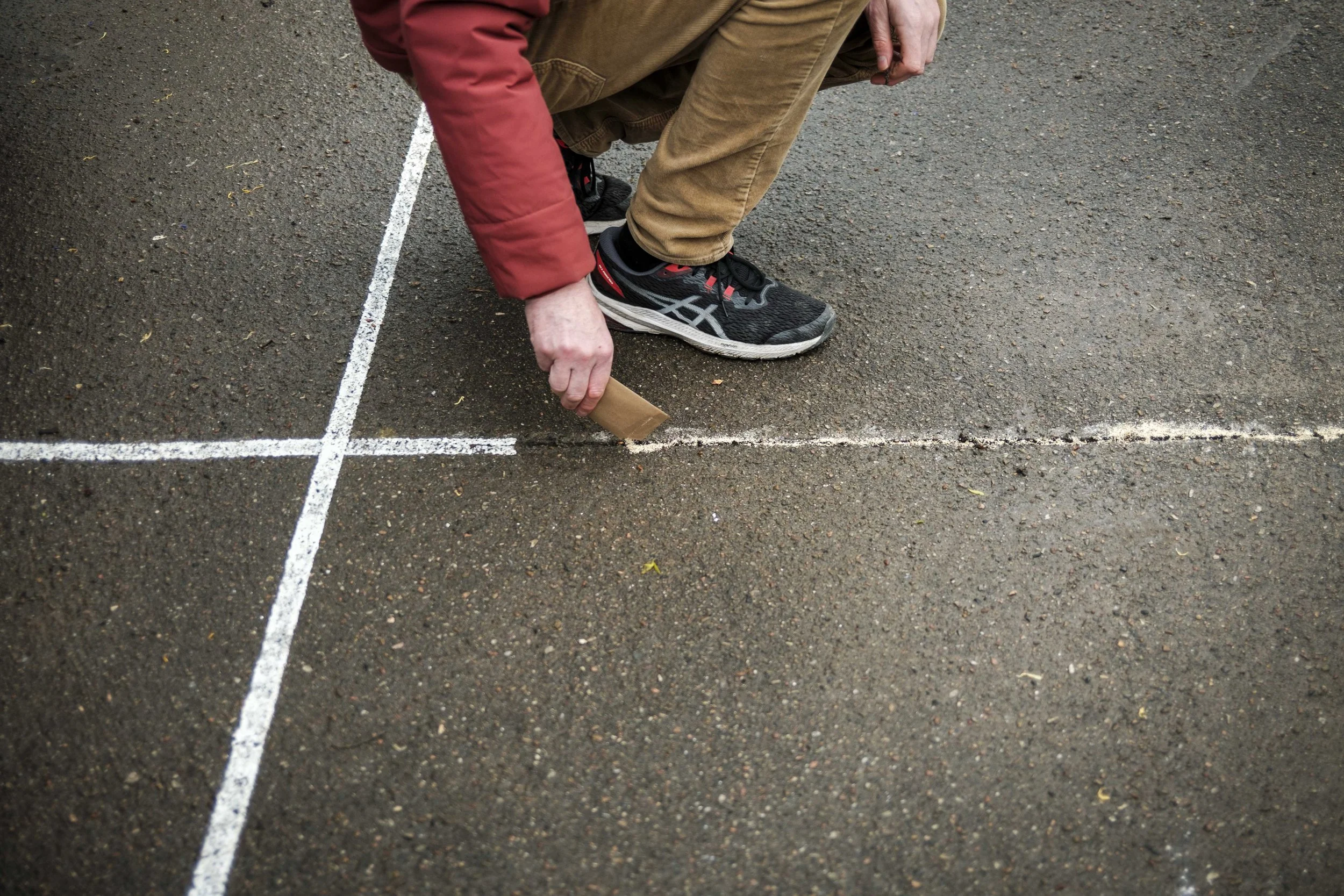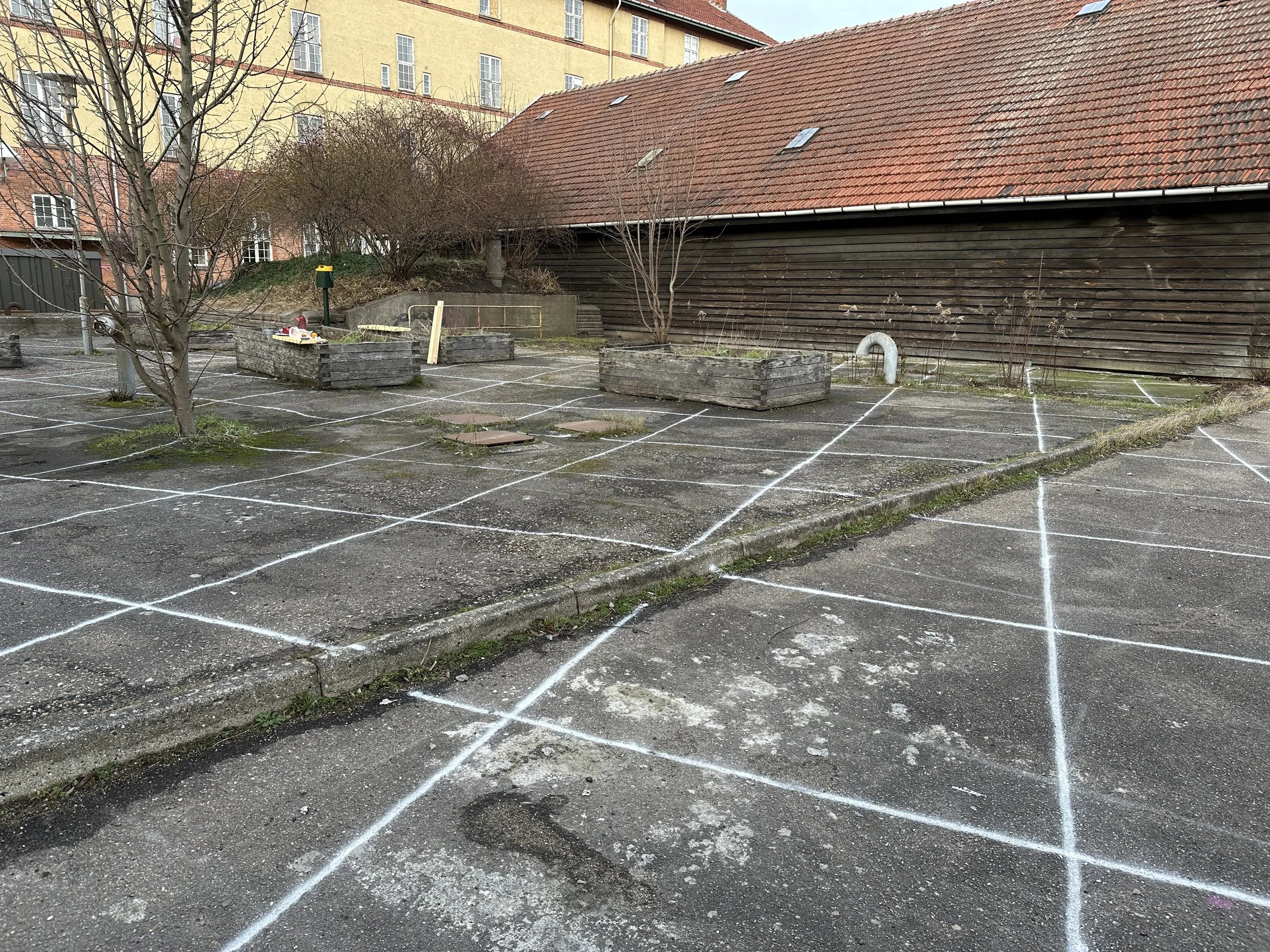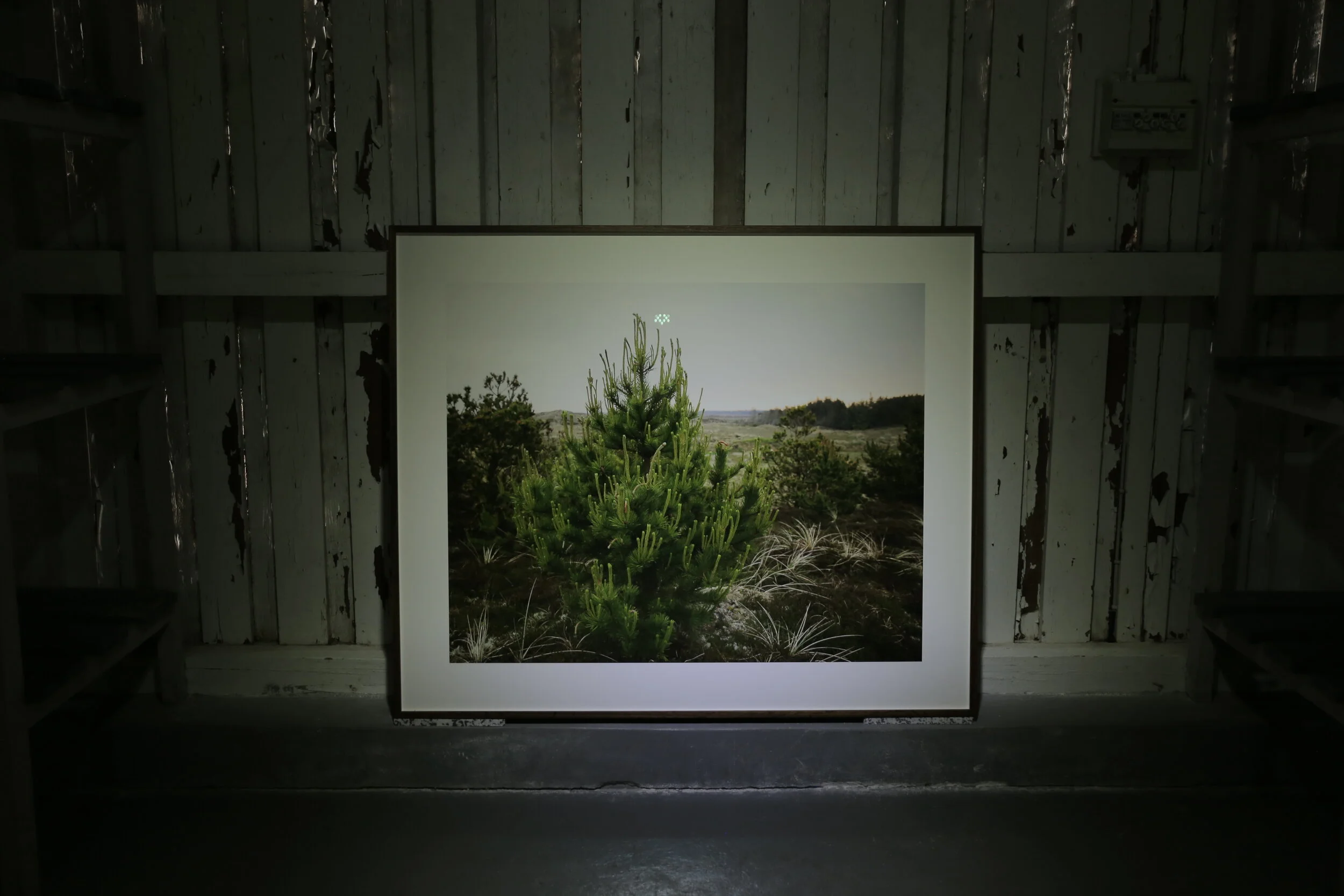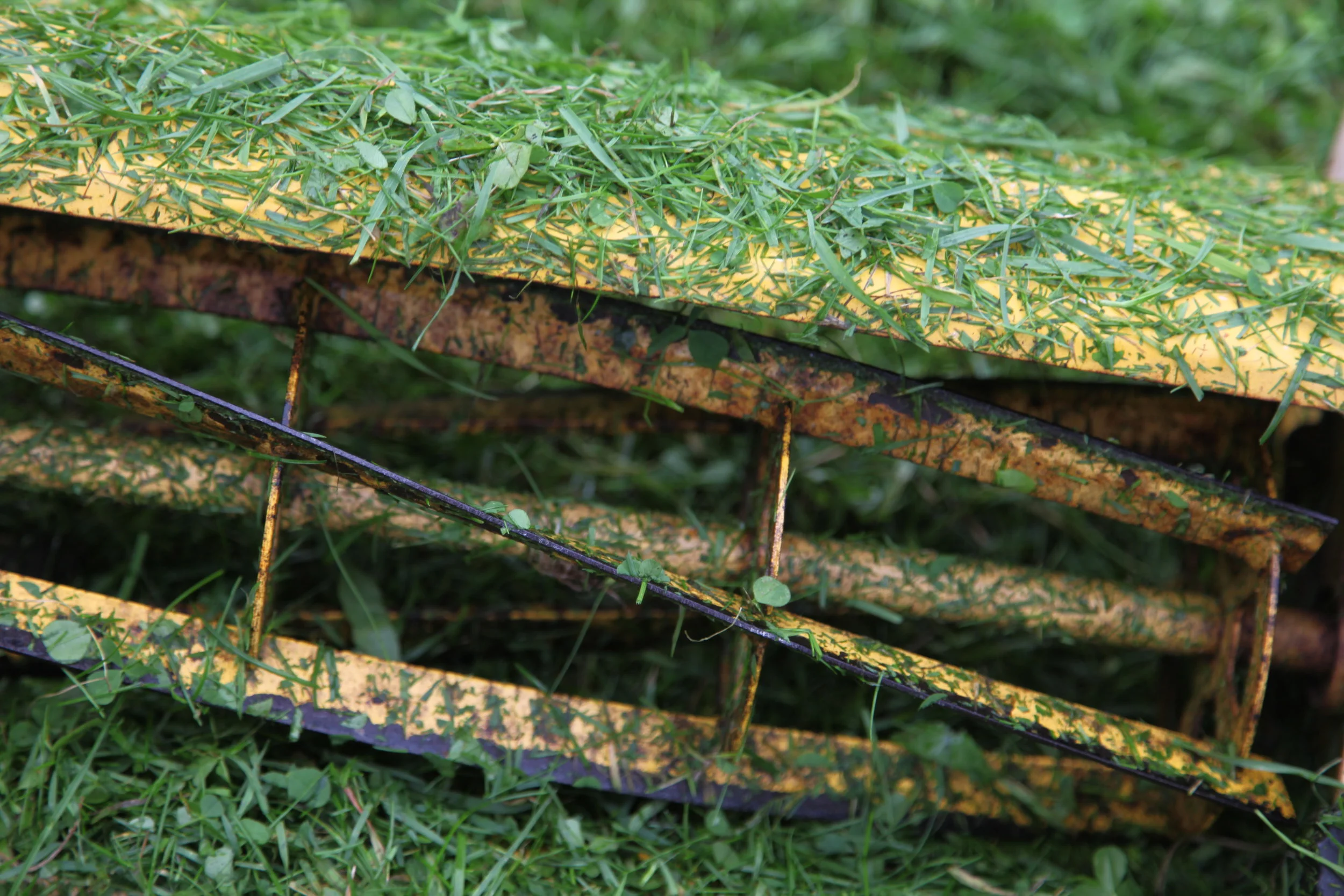Flyttet Istid
Five permanent public art works
Part of Vestegnens Kulturuge
Albertslund, Høje-Taastrup, Ishøj, Vallensbæk & Hvidovre
2021
Five artificial glacial erratic rocks are placed in five municipalities in Vestegnen, Denmark. Together, they form ICE AGE RELOCATED, an artwork by artist Camilla Berner. With the work as a prism, the artist wants to highlight the landscape and the layers we can observe in the terrain – from the shaping of the landscape during the Ice Age, to the impact of urbanisation and how we are connected to natures epic story. Perhaps our experience of the landscape could be richer if we opened our eyes to the layers in the landscape. If we consider the city to be the most recent layer in the landscape – what other layers might there be? The Ice Age, before the Ice Age, historically, and to the present time.
If you take a tour of all the sculptures, you will partly experience a journey through today’s cultivated landscape, but you will also move from the Ice Age, to the period after the Ice Age, to historical and current mining and quarrying, industrialisation, the former coastline, and the dense urban space. With a symbol from the Ice Age moved into present time, you might acquire a different perspective of the landscape.
ALBERTSLUND - Tunnel valley
When the Ice Age came to an end, a tunnel valley remained. This gave us Store Vejleådal, which winds through an open meadow landscape with scattered vegetation and grazing cows. The open landscape allows the gaze to wander to the horizon, but the view ends in a faraway motorway, revealed by the subdued, but persistent, sound of the cars. The sculpture itself seems to be lying in the grass, as a fixed point from a geological time, and could appear to have been there since the ice melted away. The river valley was created by meltwater, that flowed in a tunnel under the ice.
HØJE-TAASTRUP - Sediments from the meltwater
Industrial heritage emerges in this place in Hedehusene – a history of exploitation of the resources in the earth, which has resulted from what is called “sediment sorting”. When the ice melted, the materials carried by the ice were sediments by the meltwater. The result of the ice’s work over millennia; stones, gravel and clay. Materials that have since been processed locally for e.g. tiles, concrete and stone wool. Wedged between the overflow reservoir and viaduct, the sculpture of concrete, the glacial erratic rock, depicts by virtue of the symbol, but also through its own material, the raw materials from the ice, which made industry possible in this area.
ISHØJ - Raised seabed
Ishøj lays soil at Store Vejleå’s mouth at Køge Bay. When the ice disappeared from Denmark, and later the rest of Scandinavia, the sea was 3 metres higher than it is now. This is revealed by shells from saltwater mussels and snails. Later on, the land rose by 3 metres – straightening out when the pressure from the ice was gone – and Ishøj reached its current height. In Kondiskoven forest, the sculpture is hidden between the young trees on the river bank. A small piece of forest with a rich bird and insect life, which offers a sense of nature (naturalness), yet is in stark contrast to the concrete-built sculpture. It plays on the perception that it could always have been there. The passing of time and changing landscapes cover the layers, and we may be in doubt as to what came first.
VALLENSBÆK - Landscaping
The little meadow here at Vallensbæk Harbour is an example of the 20th century’s view of nature and the creative forces of man. While suburbs developed, an understanding of the fact that the residents of the cities needed areas for recreation was also growing. Several areas around Copenhagen, including Strandparken in Køge Bay, were made available for recreational purposes. Before Strandparken was built (1975-1980), this area was coastline. The original coastline is now behind the beach and passes through the meadows and shallow lakes– in Vallensbæk, the coastline runs through the small meadow, roughly where the sculpture is now located. The coastline was formed 11,500 years ago by the ice, meltwater and sea. The new coastline is man-made and provides space for homes, a harbour and beach. Few people nowadays will give thought to the fact that, where the sculpture languishes in the grass, the waves in the bay once swirled over the sand. Køge Bay Strandpark has become today's nature.
HVIDOVRE - The dense urban space
A dense urban space dominated by infrastructure. It is often a network of roads that delineate the landscapes. At a traffic light controlled intersection, there is a small area with grass, and some trees framed by roads and pathways – an area left over from urban planning, where roads and buildings have grown in between each other. Here, the presence of a glacial erratic rock would be beyond our sense of order. It could have appeared during one of the countless excavations carried out in the urban space. First as a small stone, then as a giant. And would most definitely be in the way. It therefore seems both surprising, but also credible, that a sculpture in the form of a glacial erratic rock would be located here, where it references the infrastructural reality that today’s layers spread across the landscape. Here you can see how the suburb has emerged: an old road expanded over time, newer infrastructure, residential blocks and institutions, which gradually become wedged between the existing buildings, roads and facilities. Here, the sculpture becomes a tranquil axis, around which traffic travels and man-made buildings and facilities are created.
Dimensions: 250-400 cm x 300-500 cm x 200-250 cm
Materials: concrete, reinforcing steel, plastic, pigments
Supported by and realised in collaboration with VKIR - Vestegnens Kulturinvesteringsråd.
Technical assistance: Aquila Design
READ MORE ABOUT THE PROJECT HERE
Photos: Malthe Ivarsson
Video: Flammehav

























































































































































































































































































































































































































































































































































































































































































